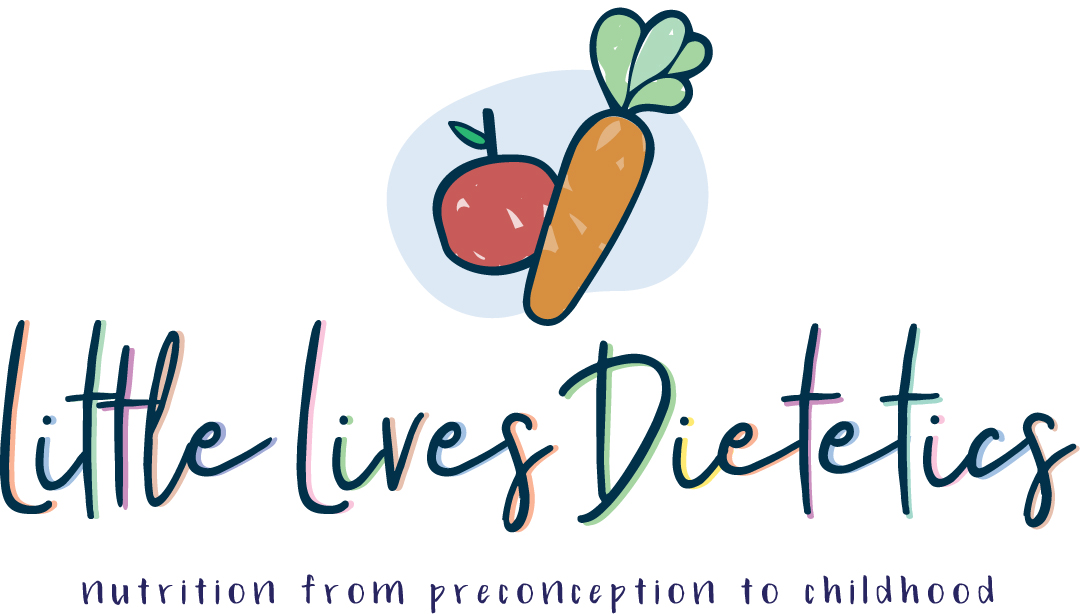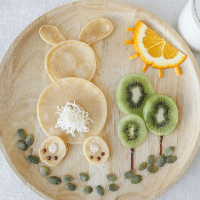
6 Tips for Raising more Adventurous Eaters
One of the most common concerns for parents with toddlers and young children is fussy eating. It can be extremely stressful to manage and can leave you feeling worried that your child is not getting the nutrition they need to grow and be healthy. To help get your child started on a path to more adventurous eating I have shared with you some of my favourite tips.
1. Enjoy meals together as a family
Eating together as a family is all about social interaction and helping your child learn about food and eating through positive role modelling. If your child sees you or a sibling eat a new food, they are much more likely to trust that the food is safe and try the food. We know from research that children who eat as a family have a more nutritionally balanced diet including increased intake of fruit and vegetables, more food enjoyment and less fussy eating.
2. Parents provide, children decide
Following the ‘Division of Responsibility’ in feeding can dramatically reduce mealtime battles and encourage more healthy eating behaviours. As a parent your role is to choose what foods are provided, when they are provided and where they are provided. Your child’s role is to decide whether to eat the foods provided and how much to eat. When choosing what foods to provide it is important to take into consideration your child’s food preferences and ensure that a preferred food is always provided alongside less preferred or new foods.
3. Create a meal and snack time schedule
To help your child come to the table with an appetite it is important to have set meal and snack times. Having a routine in place also helps your child learn to know when foods will be provided and enables them to become more aware of their hunger signals, which supports more intuitive eating. Aim for 3 main meals and 2-3 snacks, spaced approximately 2-3 hours apart.
4. Make food fun
One of my favourite ways to get children more interested in trying new foods is to make food fun. When it comes to offering new foods try to present them in a fun way which makes it more appealing to little eyes. Try using cookie cutters to make fun shapes or making a picture with the food. It can also be great to take the pressure off them at the table and get them involved in food play activities away from mealtimes. Some good ideas include:
- Making fruit and veggie stamps (e.g. apples halved, potatoes carved with a fun shape, celery stems, broccoli heads or beetroots with the end sliced off and the green leafy stem still attached for a handle) and using with edible food paints e.g. dips, yoghurt, purees
- Using broccolini, asparagus or other food as a paint brush with edible food paints
- Finger paint or make a handprint with edible food paints
- Have a pea deshelling contest – who can deshell the most peas or who can guess how many peas are in the pod
- Playing noughts and crosses – make the board with long thin foods like beans and make noughts and crosses from food e.g. cucumber noughts and capsicum crosses
- Making a sensory bin with different food ingredients and adding additional play tools such as measuring cups, spoons, toys e.g. cars, animals etc.
5. Get your child involved
Getting your child involved with food can really help them to become a more adventurous eater. Take your child to the grocery store or farmer’s market and get them to choose a new vegetable or fruit that they might like to try, plant and grow a veggie garden and best of all get them in the kitchen. It is never too early as even toddlers can help with basic tasks such as washing produce, tearing lettuce leaves for a salad, taking peas out of pods and pouring and mixing ingredients.
6. Exposure, exposure, exposure
When it comes to getting your child to be comfortable eating a wider variety of foods the most important thing as a parent that you can do is to give them the opportunity to learn to like the food through repeated exposure. We know from research that it can take 20 or more times of being exposed to a new food before it is accepted. It does take patience but it is so important to stay calm and just keep offering a small amount alongside a preferred food without pressure to eat.
If you are wanting to overcome stressful mealtimes and feel more confident knowing that your child is getting the right nutrition to grow and be healthy I am here to help. If you would like to chat about how we can work together get in touch today!





